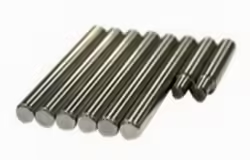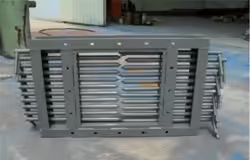
Billet Steel vs. Rolled Steel: Which is Better for You?
Table of Contents
Introduction
Steel is an essential material used in a wide range of industries, from construction to automotive manufacturing. It is valued for its strength, durability, and versatility. However, not all types of steel are the same. When selecting steel for a particular project, it’s important to understand the distinctions between billet steel and rolled steel, as both offer unique properties and advantages depending on the application.
In this blog post, we will explore the differences between billet steel and rolled steel, two of the most commonly used types of steel. We’ll delve into their manufacturing processes, physical properties, advantages, disadvantages, and the best uses for each material. By the end of this guide, you’ll have a clearer understanding of which steel type is best suited for your specific project requirements.
Billet Steel: A Comprehensive Overview
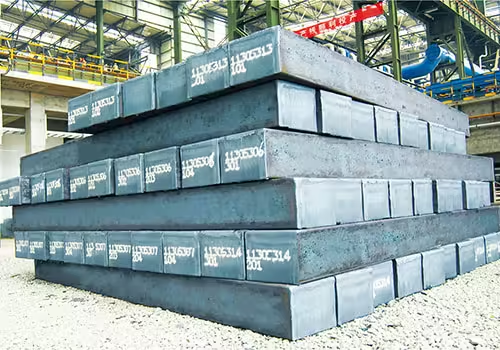
Billet steel is a type of solid steel that is produced through a continuous casting process. This process forms large blocks of steel, which are then cut into smaller sections called billets. The billets are used in various industrial applications, such as the production of rods, bars, and structural components.
Unlike rolled steel, billet steel is generally more rigid and is not as easily shaped. However, it is highly valued for its strength, which makes it ideal for applications where durability and high performance are crucial.
Key Features
- High Strength and Durability: Billet steel has superior tensile strength compared to many other types of steel. This makes it a great choice for high-stress applications, such as heavy-duty machinery and structural components in construction.
- Versatility in Further Processing: After the billet steel is produced, it can be easily processed into different shapes and sizes through forging, machining, or extrusion, providing flexibility in its final form.
- Consistent Quality: Since billet steel is produced through continuous casting, it has a high level of consistency and fewer internal defects. This quality makes it ideal for critical applications where structural integrity is key.
Common Applications
- Heavy Machinery and Equipment: Due to its strength, billet steel is often used in the manufacturing of heavy-duty machinery components, including shafts, gears, and axles.
- Construction: Billet steel is used in the production of steel beams and other structural components for building large infrastructures.
- Automotive Industry: It is also used in the production of parts that need to withstand high stress and pressure, such as engine components.
Rolled Steel: A Deeper Dive into Its Properties
Rolled steel is created by passing billet steel through rollers, which gradually reduce its thickness. This process, known as rolling, can be done either hot or cold, depending on the desired properties of the steel. Hot rolling involves heating the steel to high temperatures and then passing it through rollers, while cold rolling is done at room temperature and produces a finer, more precise finish.
Rolled steel is typically more flexible than billet steel, making it suitable for a wider range of applications. It is also more cost-effective for mass production, as the rolling process can produce large quantities of steel quickly.
Key Features
- Flexibility and Shaping: The rolling process allows for better shaping, making it easier to create thinner, more flexible sheets and plates. This flexibility also makes rolled steel ideal for applications that require bending or welding.
- Surface Finish Quality: The rolling process, particularly cold rolling, provides a smoother surface finish compared to billet steel. This makes it a preferred choice for applications where surface quality is important, such as in the automotive and aerospace industries.
- Cost Efficiency: Since the rolling process is highly efficient, rolled steel is typically more affordable than billet steel. This makes it ideal for applications that require large quantities of material, such as in construction and infrastructure.
Common Applications
- Automotive and Aerospace Industries: Rolled steel is often used to manufacture automotive body panels, frames, and other components that require precise dimensions and a smooth surface finish.
- Construction and Infrastructure: Rolled steel is used in the production of steel beams, structural plates, and other materials for building infrastructure like bridges, roads, and skyscrapers.
- Consumer Goods Manufacturing: Rolled steel is also used to produce items like appliances, furniture, and other everyday products.
Billet Steel vs. Rolled Steel: A Detailed Comparison of Properties

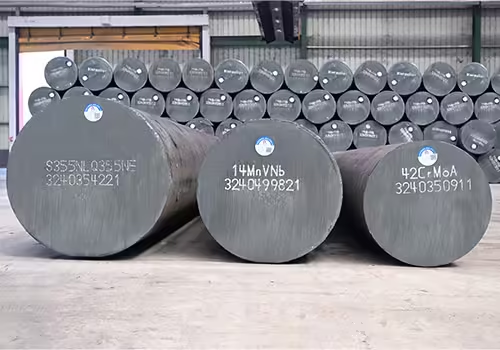
To better understand the key differences between billet steel and rolled steel, we’ve compiled the following table that compares the two materials based on several key properties:
| Property | Billet Steel | Rolled Steel |
|---|---|---|
| Strength | Higher tensile strength | Moderate tensile strength |
| Flexibility | Less flexible, more rigid | More flexible, can be shaped easily |
| Surface Finish | Rougher surface, may need further processing | Smoother surface, ideal for precise applications |
| Production Process | Continuous casting | Hot or cold rolling |
| Applications | Heavy-duty machinery, structural components | Automotive, consumer goods, construction |
| Cost Efficiency | More expensive for mass production | Cost-effective for large-scale production |
Which Is Better for Your Application?
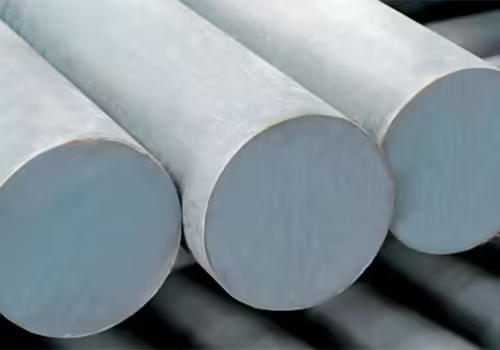
Choosing the right steel for your project depends on several factors, including strength requirements, production volume, and the specific application.
When to Choose Billet Steel
- Heavy-Duty Applications: Billet steel is perfect for applications that require high strength and durability, such as in the manufacturing of large machinery or heavy-duty structural components.
- Custom Parts: If you need to produce custom parts with unique dimensions or features, billet steel is a great option since it can be easily forged and processed into different shapes.
- Precision Engineering: The consistency and quality of billet steel make it ideal for use in industries that demand precision, such as the aerospace and automotive sectors.
When to Choose Rolled Steel
- Large-Scale Production: If you are working on a project that requires a large volume of steel at a lower cost, rolled steel is the more cost-effective choice. The rolling process allows for high-speed production, making it ideal for mass production.
- Flexibility and Shaping: For applications that require flexibility or need to be bent or welded into different shapes, rolled steel is the better option.
- Smooth Surface Finish: If surface quality is critical for your application, especially for consumer goods or automotive products, rolled steel will offer the smoother finish you need.
Conclusion
When selecting between billet steel and rolled steel, the key decision factors include the specific requirements of your project, such as strength, flexibility, surface finish, and cost-efficiency. Billet steel is best suited for high-strength, custom-made applications where durability is a top priority. It excels in heavy-duty machinery and structural components. On the other hand, rolled steel offers versatility, a smooth surface finish, and is cost-effective for large-scale production.
By considering your project’s needs carefully, you can determine which type of steel will best serve your purposes and ensure the success of your application. Whether you’re in construction, manufacturing, automotive, or aerospace, understanding the differences between these two steel types will help you make the best choice for your project.
FAQ
What is the primary difference between billet steel and rolled steel?
The main difference lies in their manufacturing processes. Billet steel is formed through continuous casting and is used for heavy-duty applications, while rolled steel is created by passing billets through rollers to reduce thickness, making it more flexible and cost-effective.
Which type of steel is stronger: billet or rolled?
Billet steel is generally stronger than rolled steel because it is made from solid blocks of steel, which are less prone to deformation. It’s ideal for heavy-duty applications where strength is crucial.
Is rolled steel more affordable than billet?
Yes, rolled steel is generally more affordable for large-scale production, as the rolling process is efficient and allows for high volumes of material to be produced quickly.
Can billet steel be used for the same applications as rolled steel?
While both types of steel can be used in construction and manufacturing, billet steel is better suited for applications that require high strength and custom shapes. Rolled steel, on the other hand, is better for mass production of thinner, more flexible materials.
Which is easier to process: billet steel or rolled steel?
Rolled steel is easier to process because it can be shaped and bent into various forms more easily than billet steel. Billet steel, being more rigid, may require additional processing, such as forging or machining, to achieve the desired shape.

